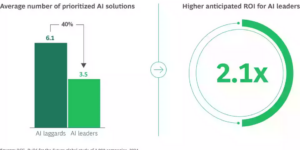Not only has reinsurance buying increased, but there also has been a flight to quality reinsurers by ceding insurance companies, according to several reinsurers and brokers in recent webinars held in lieu of what would have been the reinsurance Rendez-Vous de Septembre.
“We expect an increased demand for reinsurance. Individuals and companies are becoming more risk averse. Insurance companies have to face their own uncertainties, and are looking at additional reinsurance covers to help them protect both their capital and their earnings,” said Jean-Paul Conoscente, CEO of SCOR Global P&C, during a media briefing.
“In this increased demand for reinsurance, we also see a tiering of the reinsurance happening where there’s a higher demand for higher-rated reinsurance, and in this position, we position ourselves very, very well,” he said.
Hannover Re’s CEO Jean-Jacques Henchoz agreed that in many regions and lines of business, there has been increasing client demand for coverage from high quality reinsurers, “with above average rating and capital positions…”
“This flight to quality will be an important driver of reinsurance purchasing decisions in 2021,” Henchoz said during Hannover Re’s press briefing. “I believe Hannover Re is very well positioned to benefit from this situation, given our tactical strength and global client franchise.”
Mitigating Uncertainty
David Priebe, chairman of Guy Carpenter, attributed the increase in reinsurance buying to the fact that COVID-19 has “created a huge amount of uncertainty in the eyes of all of our clients.” He offered his comments during Carpenter’s recent virtual media briefing.
For example, he pointed to the volatility earlier this year in the financial markets and the great uncertainty in terms of how large the COVID-19 ultimately will be, which is likely to take years, rather than months to fully understand.
As a result, clients are embracing “reinsurance as a tool to help them manage volatility and protect their capital, particularly at the tail,” he said, noting they are seeking to “batten down the hatches” to protect themselves against “future financial volatility should we have a major event this fall.”
While there have been some significant catastrophe events in 2020, the industry has escaped any material financial loss events, he continued.
“We’ve also seen a lot of companies … look to shore up their balance sheets through what I call ‘financial hygiene’ in using legacy ADC, LPT transactions to shore up any potential prior year loss developments,” Priebe said, referring to adverse development covers and loss portfolio transfers.
“We have a lot of clients who have the need for additional reinsurance. I think we’re seeing growing exposures around the world, and we’re seeing higher risk awareness, which is translating into a higher demand for reinsurance,” said Mike Van Slooten, head of Business Intelligence, Reinsurance Solutions, at Aon. Van Slooten spoke during Aon’s virtual media briefing.
“New views of risk and the ability to readily transfer certain types of volatility, served to increase reinsurance demand during the last six months and we expect this trend to continue,” confirmed Aon in its publication, “Reinsurance Market Outlook – September 2020.”
The report noted that there has been “increased demand to mitigate ‘tail’ risk from catastrophe events as well as from potential loss development on legacy reserves via adverse development covers.”
During the past six months, some global insurers were able to increase property catastrophe risk transfer to mitigate further impact of COVID-19 losses, while their peak zone capacity was renewed in a relatively orderly fashion during the spring, the Aon report said.
If these dynamics persist, “slight increases in demand are expected for property catastrophe through January renewals as insurers face a heightened view of risk and volatility, and pressures from rating agencies,” the report said.
The pressure from rating agencies is driven less by their concerns about the increase in claims from the pandemic and more about “the broader impact of economic slowdown, declining interest rates and equity valuation,” explained Aon.
“Many rating agencies developed COVID-19 stress tests as early as March to test how life & health, P&C, and reinsurance companies’ balance sheets may handle the pandemic and a sustained economic slowdown,” the report continued.
Capital Inflow for Insurers
Aon noted that the improved rate environment is attracting a significant inflow of capital for insurers, which will increase demand for reinsurance.
Aon estimates that “approximately $8 billion has been raised since March to support insurance capital, with around 80% focused on offensive/growth strategies.”
In addition, Aon said in its report, there are several new insurance companies being formed, which will push the total capital raise above $10 billion. “The increasing rate environment and new entrants in the market will feed demand for reinsurance,” the report continued.
Priebe said that there has been $28 billion of capital raised by insurance and reinsurance market participants to bring additional capital into the sector.
“Fortunately, the sector has a strong track record of responding to periods of change,” Priebe said. “Putting capital to work to create new coverages and meet evolving demands will be crucial in securing the reinsurance sector’s long-term relevance.”
He said it’s important to remember that transformative events have led to product innovation many times in the past.
“We expect a similar playbook this time around. Reinsurance will be crucial in supporting insurers in this endeavor by supporting capital positions and reducing volatility,” Priebe continued. “Reinsurance is one of the most effective tools available to insurers during periods of transformational change.”
Growth Opportunities
Van Slooten said the reinsurance industry has demonstrated a lot of resilience, despite the uncertainty around COVID-19, the potential for more turmoil in the capital markets and possible risks of major loss activity before year-end.
“We’ve seen a number of players in the industry that have been able to access the capital markets. And again, it’s very important that they can demonstrate they have the access and the market is open for business,” Van Slooten said. “But as we look at the market, as it stands today, I think we clearly see there’s still a lot of capacity in the market. We see a lot of reinsurers who are talking about growth.”
The Aon report said that global reinsurance capital increased through Q2 and ended the quarter just 2 percent below year-end 2019 at US$610 billion, despite a fall to US$590 billion at the end of Q1.
“Combined with new issuances, traditional reinsurance capital now stands at US$519 billion,” the Aon report said. “While alternative capital remains impacted by trapped capital from historical losses, the diversification aspect of reinsurance risk continues to draw investors and remains a significant portion (circa 15%) of global reinsurance capital for the market ending Q2 at approximately US$91 billion.”





















 The Future of the Insurance Customer Experience Is Unity, Personalization
The Future of the Insurance Customer Experience Is Unity, Personalization  Is State Farm General Too Big to Fail? Calif. Rate Hearing Concludes
Is State Farm General Too Big to Fail? Calif. Rate Hearing Concludes  California Wildfires Had Little Impact on Reinsurers’ Risk Appetite During April Renewals
California Wildfires Had Little Impact on Reinsurers’ Risk Appetite During April Renewals  AM Best: Tariff Uncertainty Could Lead to Credit Rating Changes for Insurers
AM Best: Tariff Uncertainty Could Lead to Credit Rating Changes for Insurers 




